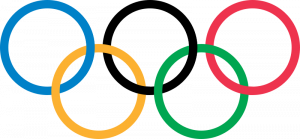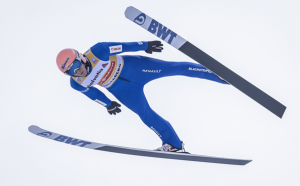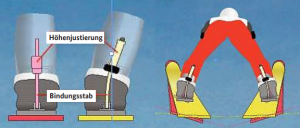Difference between revisions of "Wireless In Action Data Streaming in Ski Jumping (1 B/S)"
From iis-projects
(Created page with "thumb thumb| ==Short Description== This project focusses on the development of an unobtrusive multisensory embedd...") |
|||
| Line 9: | Line 9: | ||
==Short Description== | ==Short Description== | ||
| − | + | In ski jumping, low repetition rates of jumps limit effectiveness of training. Thus, increasing learning rate within every single jump is key to success. A critical element of athlete training is motor learning, which has been shown to be accelerated using feedback methods. Today, coach’s training feedback is mainly oral and based on recorded video data. Video data provides good insight into the entire jump, however translating video information into actual motor control is difficult | |
| + | |||
| + | To improve current feedback methods, we want to develop an in-action system that converts sensor node data into simple yet motor-transferable information. To do this, data must be transmitted between onbody sensor nodes as well as between a sensor node master and the coaching tower. This requires reliable wireless communication with sufficient bandwidth and range. | ||
| − | |||
===Status: Available === | ===Status: Available === | ||
| Line 33: | Line 34: | ||
===Character=== | ===Character=== | ||
| − | : | + | : 60% Firmware Development |
| − | : 20% | + | : 20% Fieldwork |
| − | : | + | : 10% Hardware evaluation and integration |
| − | : | + | : 10% Data analyses and documentation |
===Professor=== | ===Professor=== | ||
| Line 49: | Line 50: | ||
==Detailed Task Description== | ==Detailed Task Description== | ||
| − | The main | + | The main objective of this work is to implement and test a reliable Bluetooth Low Energy Coded PHY radio communication |
| + | between an existing sensor node and a gateway. Field measurements (also with real ski jumpers) shall demonstrate the performance of the developed system. According to the level of the student and the chosen thesis type (BT/ST) the work will include some or all following tasks: | ||
[[File:SkiEdgingAngles.png|thumb|]] | [[File:SkiEdgingAngles.png|thumb|]] | ||
Revision as of 20:42, 14 July 2023
Contents
Short Description
In ski jumping, low repetition rates of jumps limit effectiveness of training. Thus, increasing learning rate within every single jump is key to success. A critical element of athlete training is motor learning, which has been shown to be accelerated using feedback methods. Today, coach’s training feedback is mainly oral and based on recorded video data. Video data provides good insight into the entire jump, however translating video information into actual motor control is difficult
To improve current feedback methods, we want to develop an in-action system that converts sensor node data into simple yet motor-transferable information. To do this, data must be transmitted between onbody sensor nodes as well as between a sensor node master and the coaching tower. This requires reliable wireless communication with sufficient bandwidth and range.
Status: Available
- Students will be co-supervised by the Center of Project Based Learning.
- Looking for 1-2 Semester/Master students
- Contact: Christoph Leitner, Lukas Schulthess (PBL)
Prerequisites
- Embedded systems and PCB design
- Microcontrollers
Character
- 60% Firmware Development
- 20% Fieldwork
- 10% Hardware evaluation and integration
- 10% Data analyses and documentation
Professor
Detailed Task Description
The main objective of this work is to implement and test a reliable Bluetooth Low Energy Coded PHY radio communication between an existing sensor node and a gateway. Field measurements (also with real ski jumpers) shall demonstrate the performance of the developed system. According to the level of the student and the chosen thesis type (BT/ST) the work will include some or all following tasks:
Goals
Sensors and Acquisition
- Investigation and evaluation of various commercially available sensor technologies (IMUs, pressure sensors).
- Evaluation of the attachment of sensors to skis and in boots.
- Use an in-house multipurpose embedded systems controller (Vitalcore) to build & test data collection with sensors.
Communication and Data Transfer
- Develop a data transfer strategy to
- collect data from two different sensors, and
- to transmit synchronized (raw) data to the coaching tower.
- Use an in-house multipurpose embedded systems controller (Vitalcore) to test data transfers via BLE.
- Test data transfer in ski jumping arena situation and revaluate transfer strategy if necessary.
Assembly and Test
- Make a PCB board design for the readout system.
- Design a casing to attach sensors system on the skis or shoes. Aiming for a minimalistic form-factor and weight.
- Test, build and evaluate a working prototype in laboratory conditions and in a real-life environment.
Practical Details


